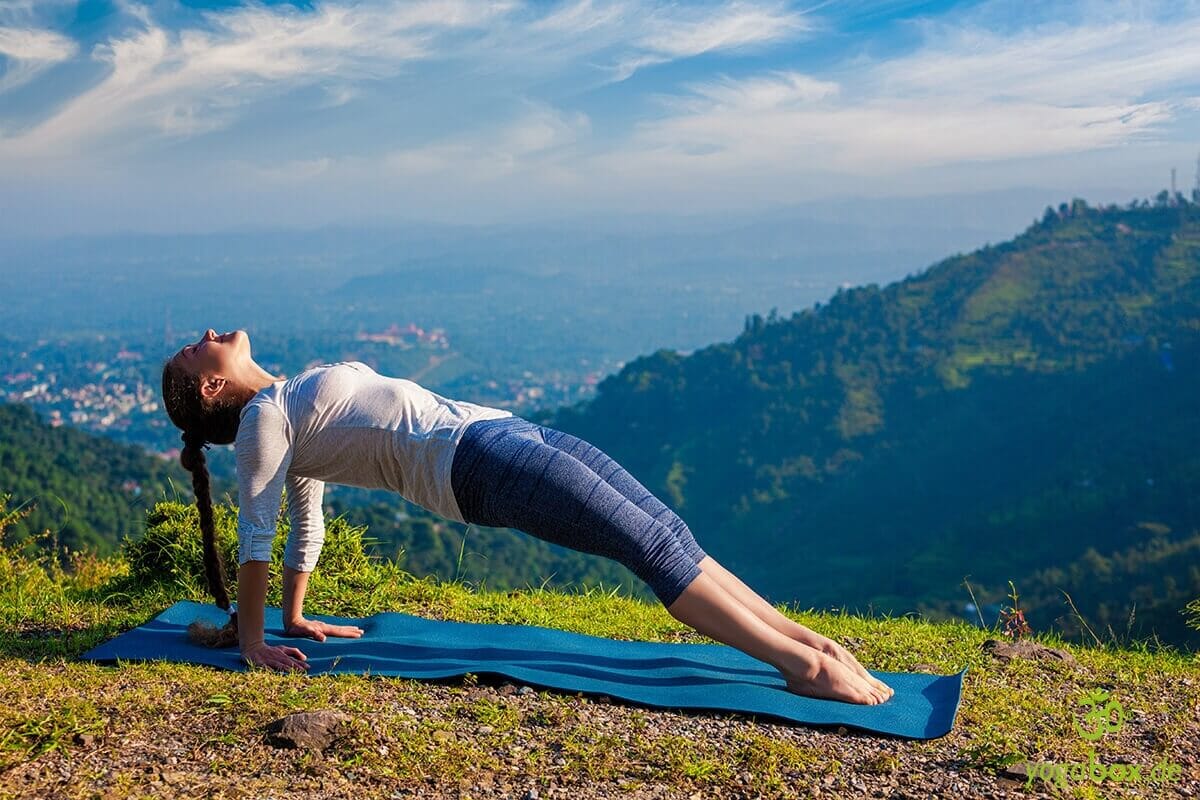Supta Vajrasana - Sleeping Diamond Supta Vajrasana, also known as Paryankasana, translates to "sleeping diamond" or "diamond sleep." It is a very popular meditation pose in yoga. It is equally suitable for men and women. Supta Vajrasana is an advanced backbend. This yoga asana can be practiced after Dhanurasana (Bow Pose) , Kapotasana (Pigeon Pose) , or Halasana (Plough Pose) . Supta Vajrasana is one of the 84 cardinal asanas. Below, you'll learn how to perform the pose, its benefits, and who should avoid it. How is Supta Vajrasana performed? To perform this yoga exercise, sit on your heels in Vajrasana. This is the starting position. Then lean back and slowly place your elbows on the floor, then bend backward. Your forearms and elbows can serve as support or as a resting place. Stretch your arms behind you. Place your right forearm first, then your left. Stay in Vajrasana, however, so that your upper body is still on the floor and your knees are bent. You can place your heels next to your buttocks and your hands next to your body. Try to keep your knees on the floor at all times. They can be slightly apart rather than leaving the floor. Close your eyes to feel a sense of relaxation throughout your body. Breathe deeply and slowly. Remain like this for a few minutes. Then turn your body onto your left side, slowly rise, and consciously allow the energy to flow. In the final pose, it is important to breathe deeply, slowly, and consciously. What effects can you achieve with Supta Vajrasana?
Supta Vajrasana strengthens and stretches the thighs and abdominal muscles. The spine, knees, and ankles become more flexible, and the calves and thighs acquire a beautiful shape. Supta Vajrasana also has various health benefits. This pose can, for example, help with constipation and provide relief from sciatica, rheumatism, gout, colitis, and varicose veins. People with lower or middle back pain particularly benefit from this yoga pose, as it optimally stretches the back and hips. Furthermore, the internal organs can be stretched and stimulated, especially those in the pelvic area, such as the pancreas, liver, and kidneys. This pose is therefore particularly suitable for women, as stretching the pelvic area has a positive effect on the ovaries and fallopian tubes. This can alleviate and prevent menstrual pain. The lungs can function better because the body receives more oxygen. Supta Vajrasana can also be helpful for asthma and bronchitis. Furthermore, the exercise can activate the thyroid, the hormonal gland system. It can also reduce complications during pregnancy. It can also make childbirth easier. Mentally, Supta Vajrasana promotes greater openness and a zest for life. Conclusion The effects of the yoga exercise Supta Vajrasana can be diverse: Physically, it increases the flexibility of the back and chest. The abdominal and leg muscles are stretched, and the knees are strengthened. A pleasant stretch is generally desired, but overstretching the muscles and ligaments should be avoided. The exercise can also have mental benefits. Beginners should place a pillow under their back , and pregnant women should also place one under their hips. The knees should not be opened too wide. Supta Vajrasana is not suitable for people with neck or knee problems, sciatica, sacral disorders, or herniated discs. If unsure, consult a doctor. Image © fizkes / 123rf.com


